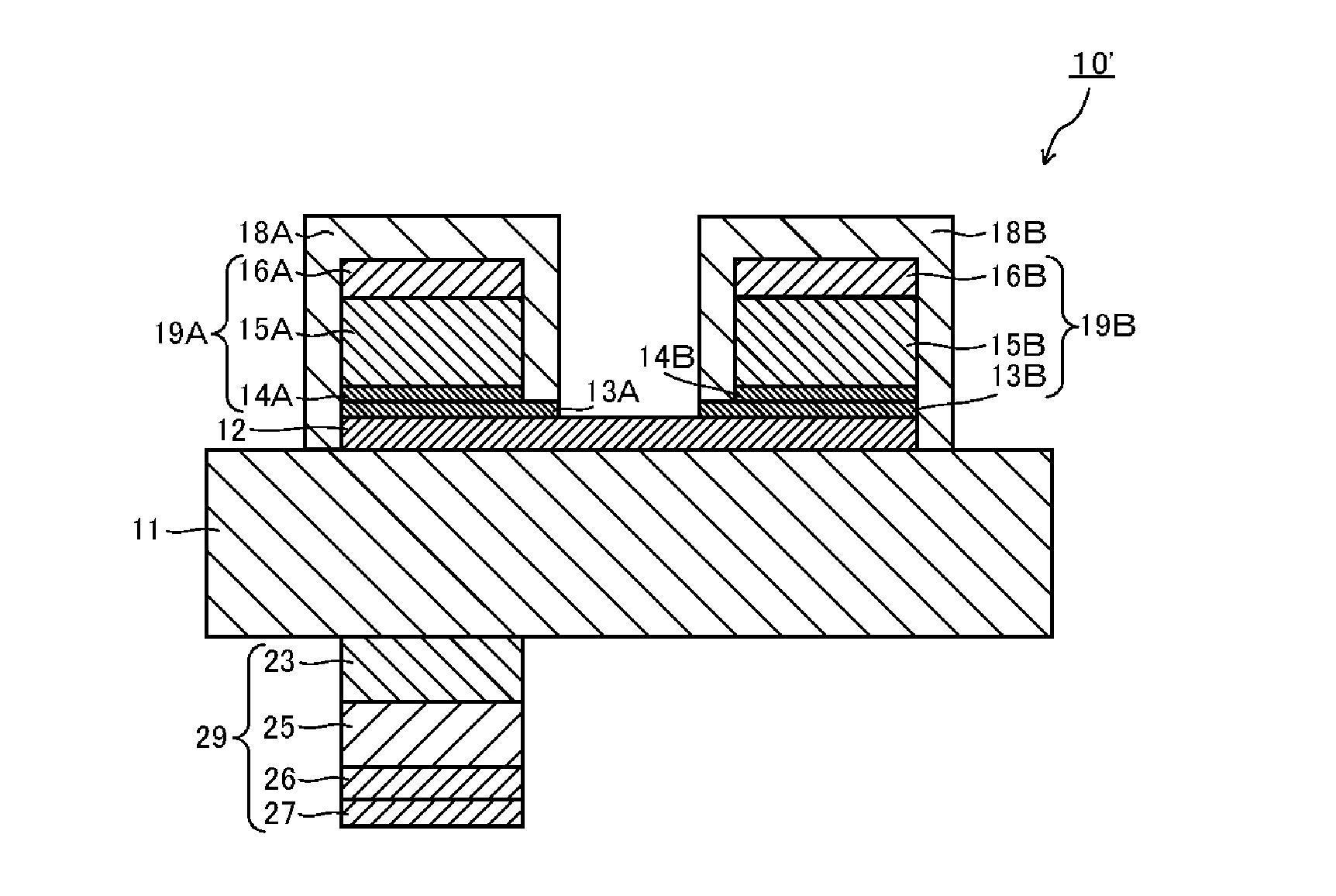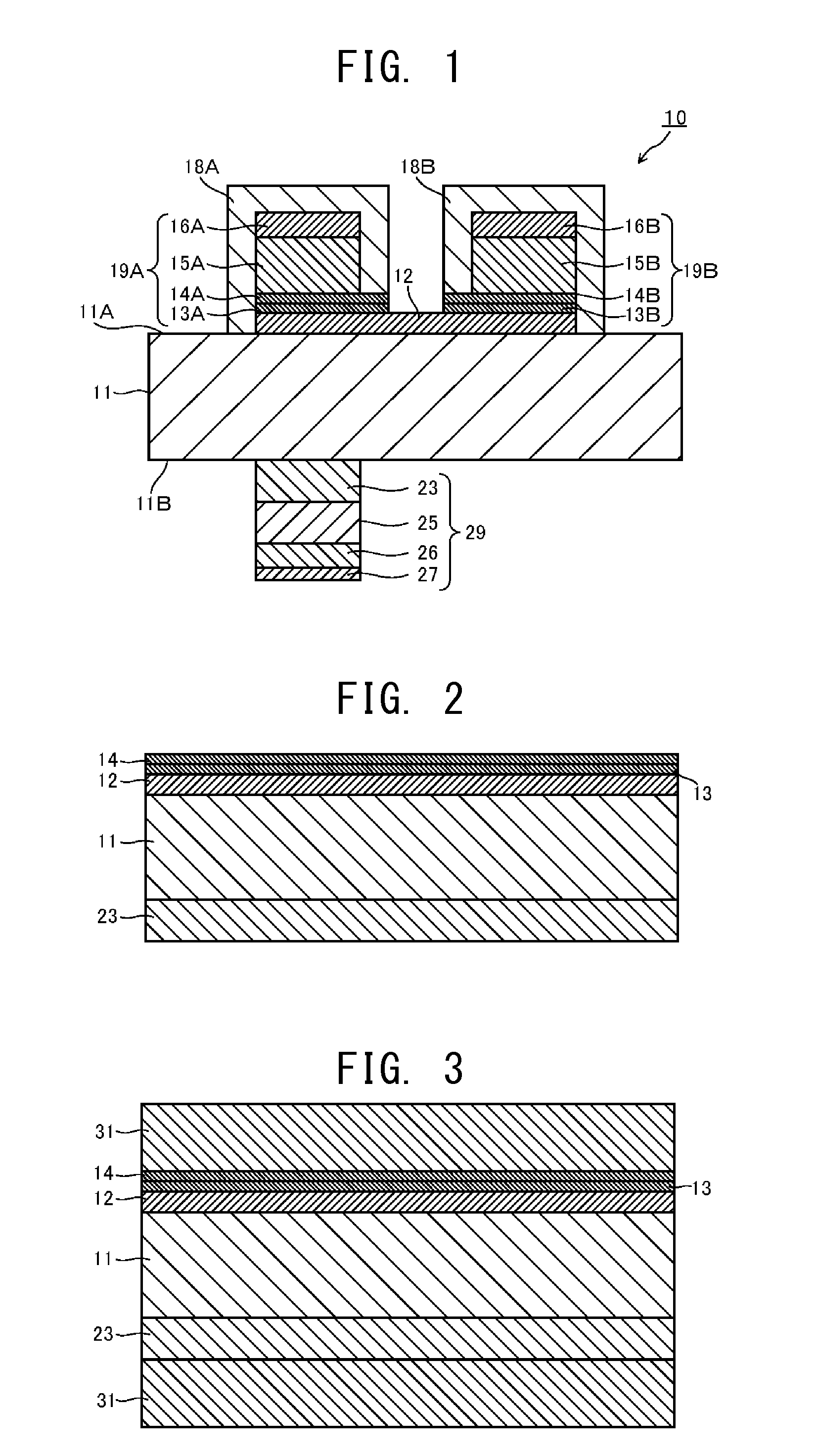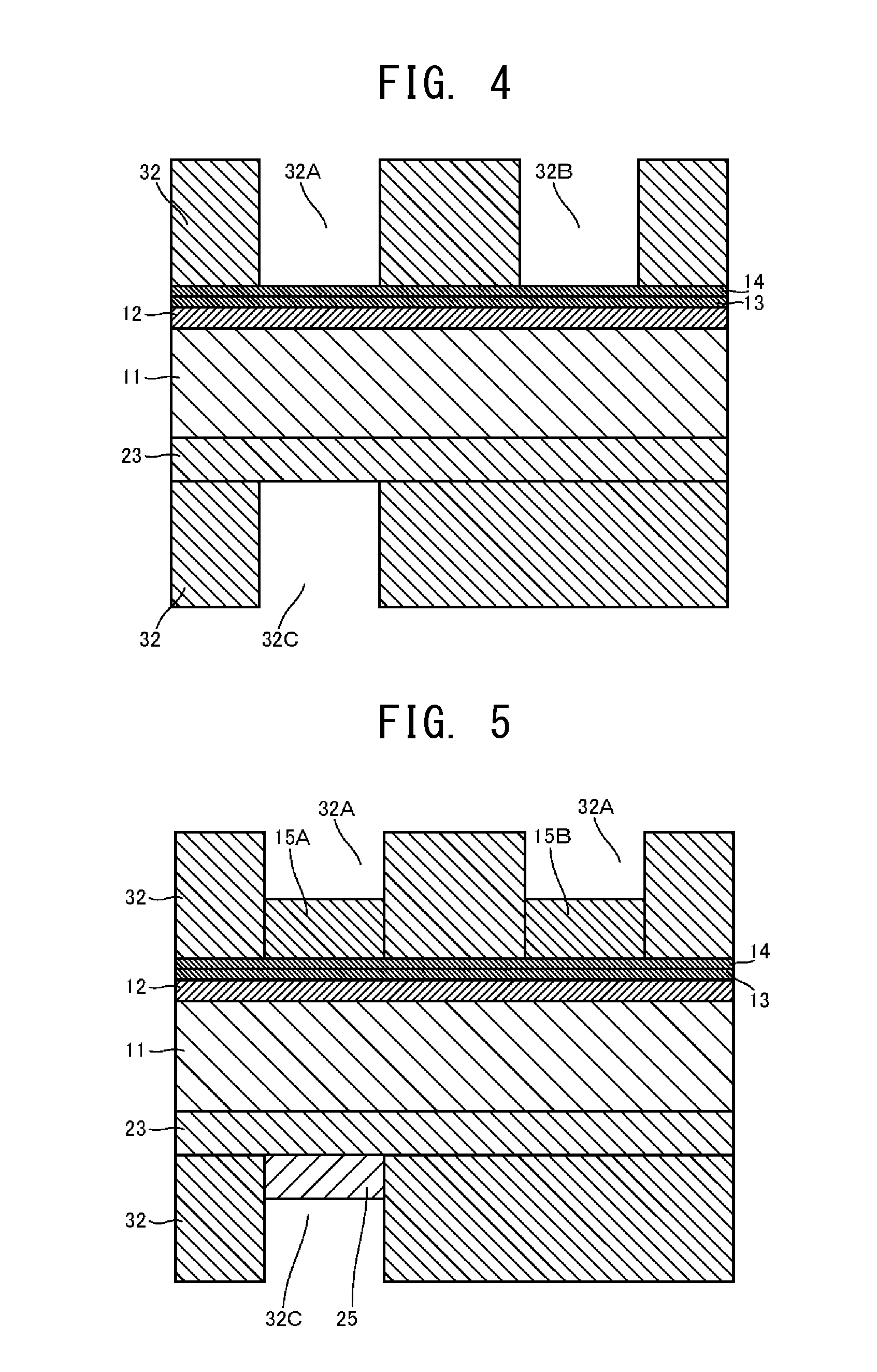Wiring substrate and method of manufacturing the same
a technology of wiring substrate and resistor, which is applied in the direction of resistive material coating, metallic pattern materials, metallic material coating process, etc., can solve the problems of reducing the adhesion strength between the laminate (i.e., the conductor portion) and the resistor, and reducing the adhesion strength. , to achieve the effect of preventing the formation of short circuit, reducing the generation of whiskers, and increasing the adhesion strength
- Summary
- Abstract
- Description
- Claims
- Application Information
AI Technical Summary
Benefits of technology
Problems solved by technology
Method used
Image
Examples
first embodiment
Wiring Substrate
[0052]FIG. 1 is a sectional view schematically showing the structure of a wiring substrate according to the present embodiment. As shown in FIG. 1, a wiring substrate 10 of the present embodiment includes a substrate main body 11 and a film-like resistor 12 formed of, for example, Ta2N. The resistor 12 is formed on a first main face 11A of the substrate main body 11 such that the resistor 12 is electrically connected to an internal wiring layer (e.g., a via) formed in the substrate main body 11. The substrate main body 11 may be formed of, for example, a ceramic multilayer wiring substrate.
[0053]A first-main-face-side wiring layer 19A (a stack of layers collectively called “wiring layer 19A”) is provided on the resistor 12. The first-main-face-side wiring layer 19A is constituted by sequentially forming a first portion 13A of a first grounding metal lower layer formed of, for example, Ti and having a thickness of 0.2 μm, a first portion 14A of a first grounding metal...
second embodiment
Wiring Substrate
[0091]FIG. 18 is a sectional view schematically showing the structure of a wiring substrate according to the present embodiment. Notably, structural elements similar or identical to those of the wiring substrate 10 shown in FIG. 1 are denoted by the same reference numerals.
[0092]A wiring substrate 10′ of the present embodiment differs from the wiring substrate 10 of the first embodiment in that the conductive covering layers 18A and 18B are formed on the first main face 11A of the substrate main body 11 such that the conductive covering layers 18A and 18B cover the mutually facing side surfaces of the first-main-face-side wiring layers 19A and 19B. Specifically, the conductive covering layer 18A covers the side surface of the first portion 14A of the first grounding metal upper layer of the first-main-face-side wiring layer 19A, which side surface faces the first-main-face-side wiring layer 19B, and the conductive covering layer 18B covers the side surface of the sec...
PUM
| Property | Measurement | Unit |
|---|---|---|
| thickness | aaaaa | aaaaa |
| thickness | aaaaa | aaaaa |
| thickness | aaaaa | aaaaa |
Abstract
Description
Claims
Application Information
 Login to View More
Login to View More - R&D
- Intellectual Property
- Life Sciences
- Materials
- Tech Scout
- Unparalleled Data Quality
- Higher Quality Content
- 60% Fewer Hallucinations
Browse by: Latest US Patents, China's latest patents, Technical Efficacy Thesaurus, Application Domain, Technology Topic, Popular Technical Reports.
© 2025 PatSnap. All rights reserved.Legal|Privacy policy|Modern Slavery Act Transparency Statement|Sitemap|About US| Contact US: help@patsnap.com



